By Joe Berk
When you’re a retired engineer who likes to play with guns…well, read on.
After my great results with 8.8 grains of Power Pistol under the 118-grain ARX bullet in the .45 ACP, I learned that Power Pistol is no longer available. That was good news and bad news. The bad news is I that I can no longer get that powder. The good news is that I already have something like 850 loaded rounds with Power Pistol (those will last me for a while). More good news is that I have an excuse (not that I needed one) to find another load for my .45 with the ARX bullets.
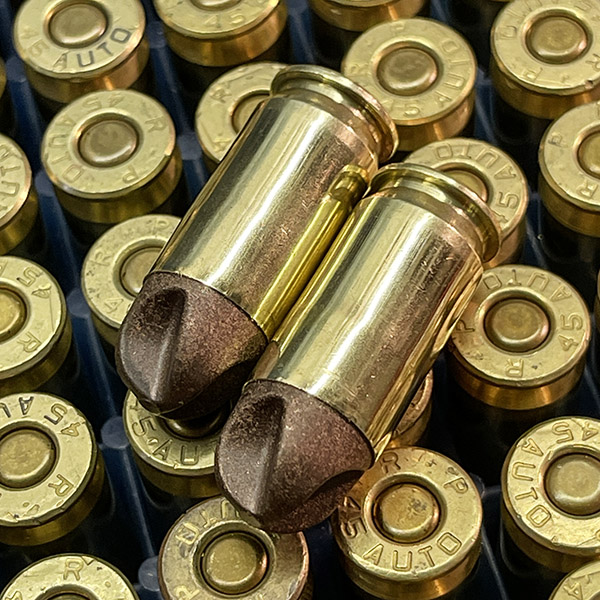
Winchester’s 231 worked great in the 9mm and I had some on hand, so that’s what I thought I would try next. Inceptor lists two load ranges; I stuck to the standard (i.e., non +P) range. With the 118-grain .45 ARX bullets, Inceptor showed the Winchester 231 propellant range to be 6.3 to 7.0 grains. I loaded at 6.8 and 7.0 grains. I test fired at 10 yards, just as I had done before with the Power Pistol loads.
In the full-sized Springfield Armory 1911, both 6.8 and 7.0 grains of 231 functioned reliably. The 7.0 grain group was noticeably tighter than the 6.8 grain load. The two targets on top were with 6.8 grains of 231; the two on the bottom were with 7.0 grains. The two 7.0-grain groups were right on top of each other if you look at both targets. There was one flyer in the first group, and that’s due to me. The second group was one ragged hole. This is a good load in the 5-inch Springfield 1911.
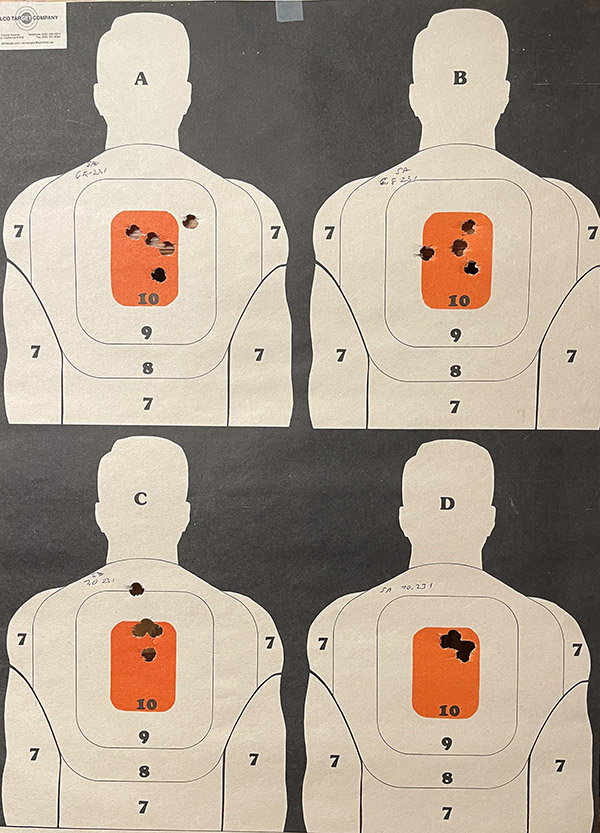
From a velocity and velocity variation perspective, the Springfield 6.8-grain load was tighter, but I’m sticking with the 7.0-grain load (it grouped better). If there was a difference in felt recoil between the two loads, I couldn’t detect it. Here’s the chrono readout for the Springfield and the 6.8-grain load:
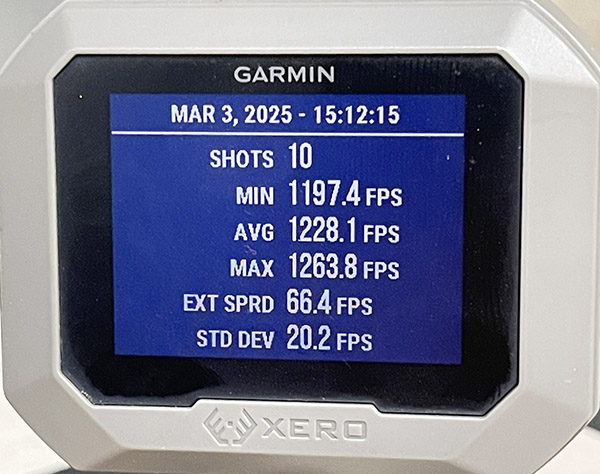
Here’s the chrono result for the Springfield and the 7.0-grain load:
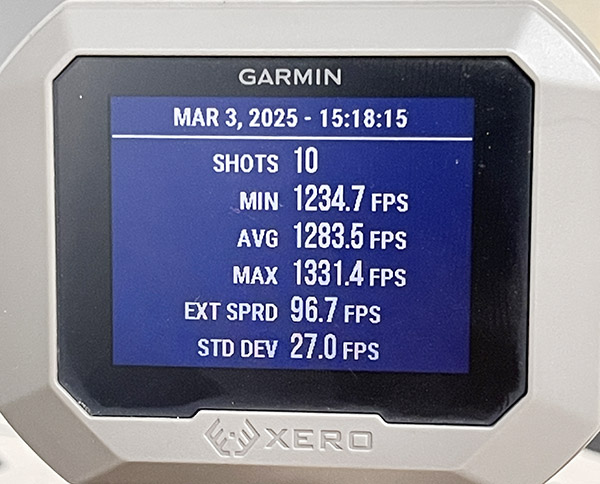
As a point of reference, the average velocity with the 8.8-grain Power Pistol load was 1299 fps, so this is only a little bit slower (16 fps, to be exact). The bottom line is that the 7.0-grain 231 load is a suitable substitute for the 8.8-grain Power Pistol load in the full-sized 1911.
I next turned to the Rock Island Armory Compact. It’s one my good buddy TJ of TJ’s Custom Guns worked over for me and it is superbly accurate and reliable with conventional cast and jacketed bullets. The Compact has a 3 1/2-inch barrel. The ARX bullets did not perform well with either powder (Winchester 231 or Power Pistol) in the Compact 1911. They tumbled in flight and they were not accurate. The 7.0-grain 231 load functioned the pistol reliably, ejected all cartridge cases, and held the slide open after the last round. The 6.8-grain 231 load worked the slide and it stayed open after the last round, but on the last round the cartridge case remained in the chamber. These factors (along with the poor accuracy and the tumbling in flight) showed the ARX bullets and 231 are not good in my Compact 1911.
I tried the ARX bullets with my prior 8.8-grain Power Pistol load in the Compact 1911 Everything on the gun functioned the way it should (I had reliable ejection and the slide stayed back on the last round), but the accuracy was poor and the bullets tumbled in flight just as they had with the 231 loads. The shorter 3 1/2-inch barrel just doesn’t give the bullets enough velocity to stabilize.
Here’s what the targets looked like with the Compact 1911. The left top is the 6.8-grain 231 load, the top right is the 7.0-grain W31 load, and the bottom two are with 8.8 grains of Power Pistol. Accuracy was terrible with all, and like I mentioned above, all loads exhibited tumbling. This is why we test loads. Some work, some work wonderfully well, and some don’t work at all.
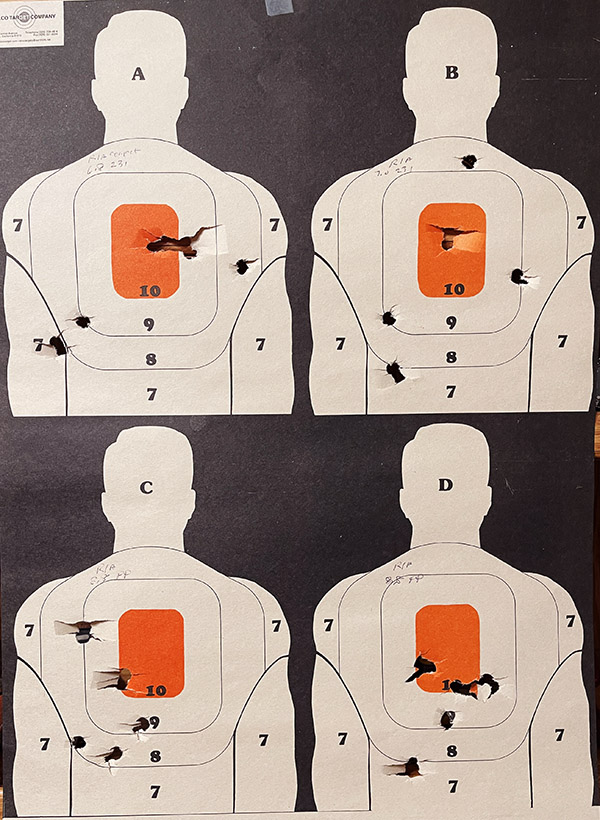
Here’s a closeup of the tumbling. It’s obvious what’s going on here.
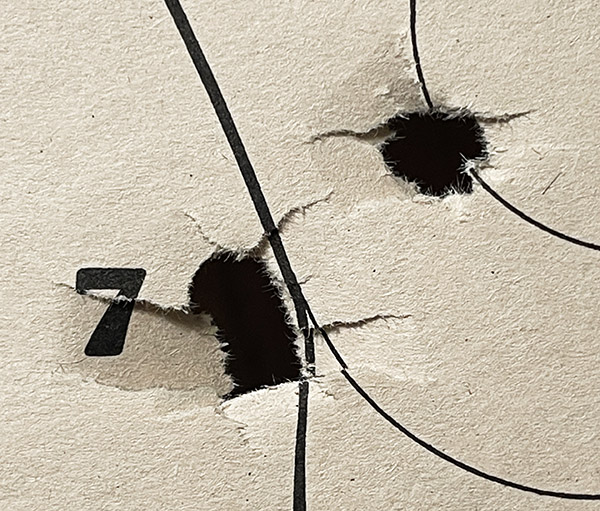
These bullets need a minimum velocity to stabilize, and the Compact 1911’s shorter barrel isn’t delivering it. Here are the chrono results for the 6.8-grain 231 load (the chrono didn’t pick up a couple of the shots):
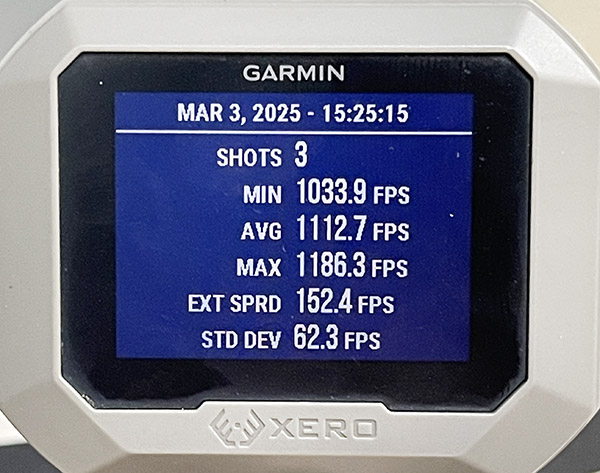
Here are the results for the 7.0-grain 231 load:
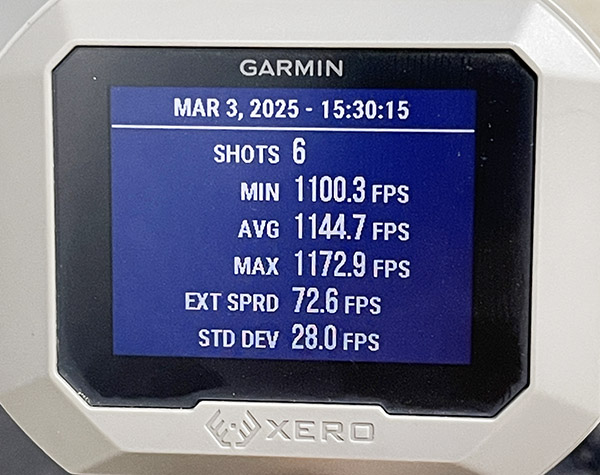
I didn’t bother chronographing the Power Pistol load in the Compact when I saw that those were tumbling, too.
It appears that the .45 bullets need something above approximately 1200 fps to stabilize. I’ll probably next test the 7.0-grain 231 load at 25 yards and 50 yards in the Springfield 1911 to see if the bullets are stable at those longer ranges. I don’t know how much velocity they’ll give up as a function of range and I’m not willing to stand downrange with the chrono to catch them as they fly by.
Join our Facebook ExNotes page!
Never miss an ExNotes blog:

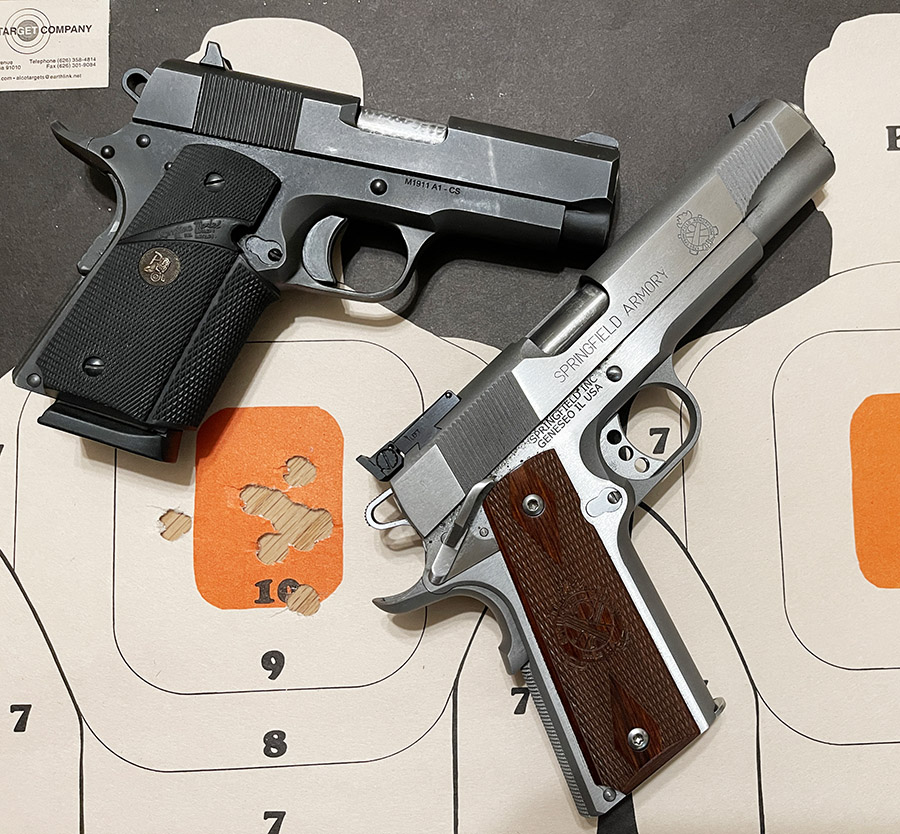

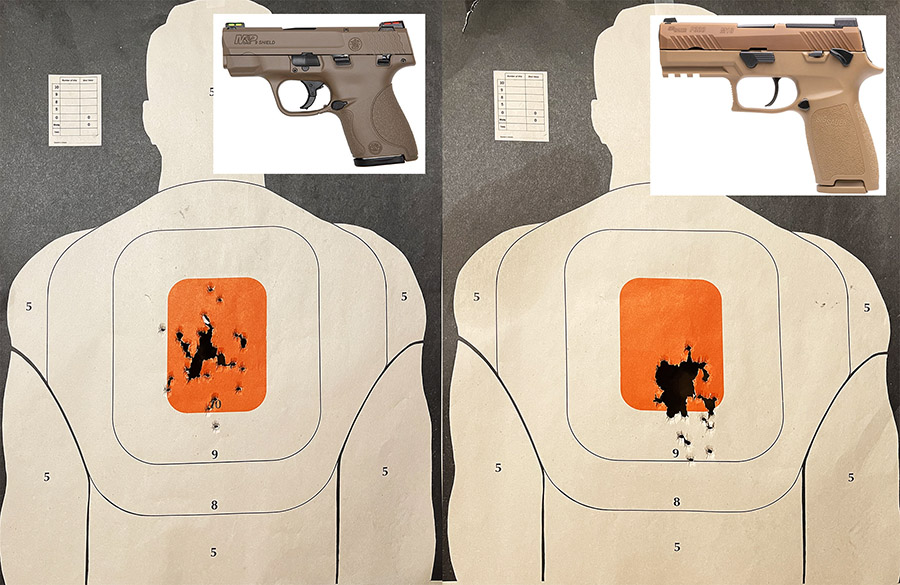
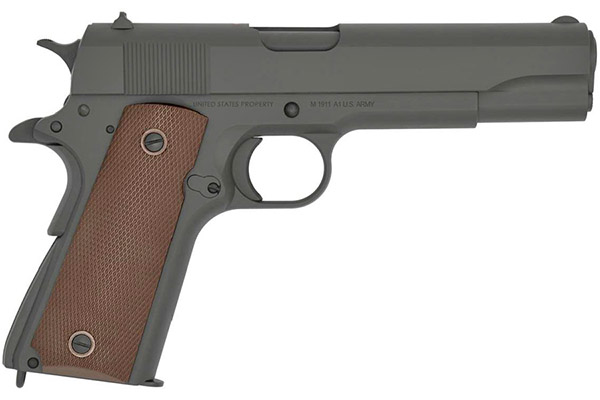
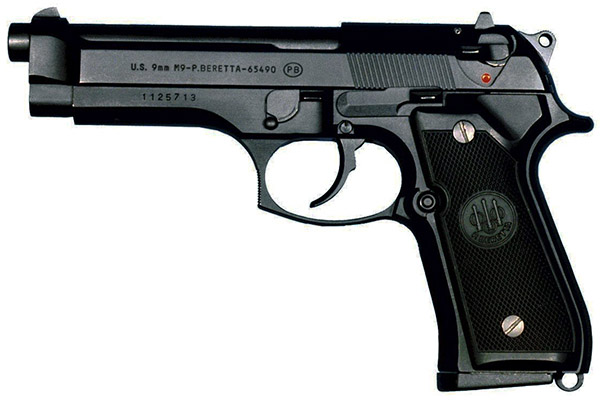
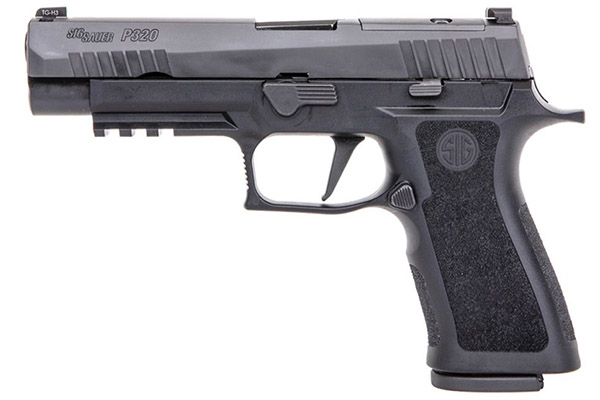
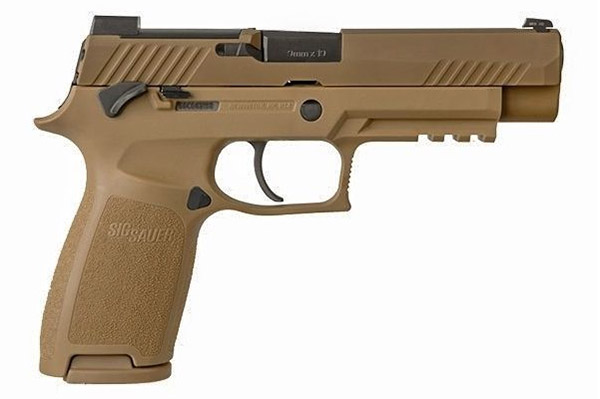
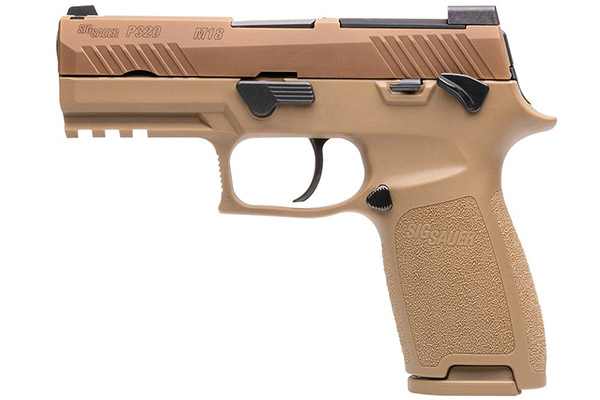

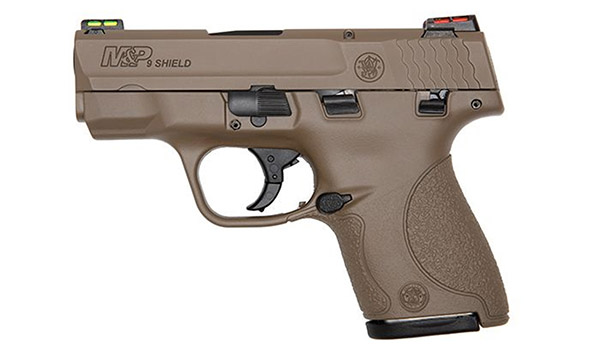


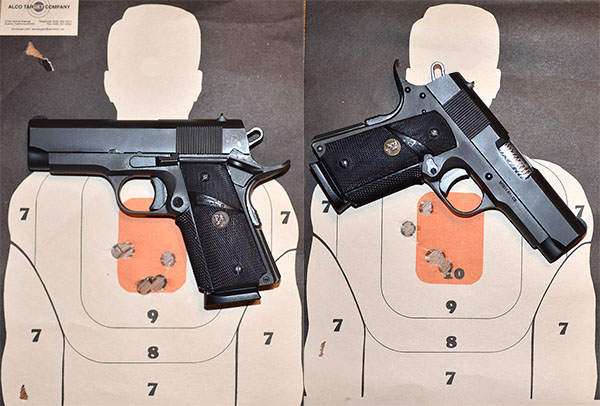
 grips. These little snubbie 1911s are surprisingly accurate.
grips. These little snubbie 1911s are surprisingly accurate.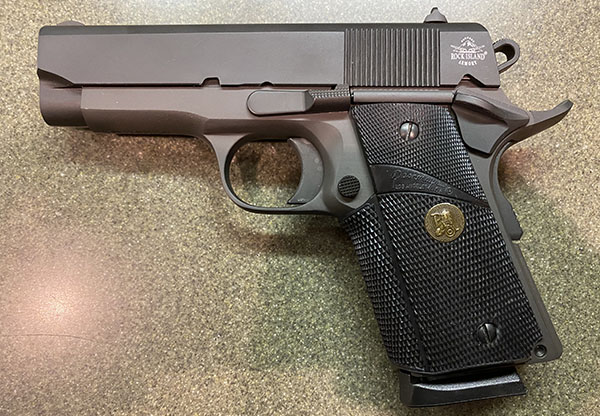
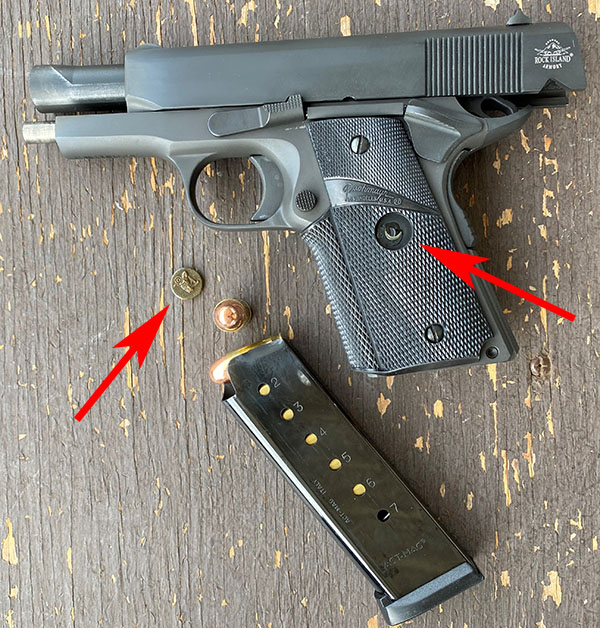
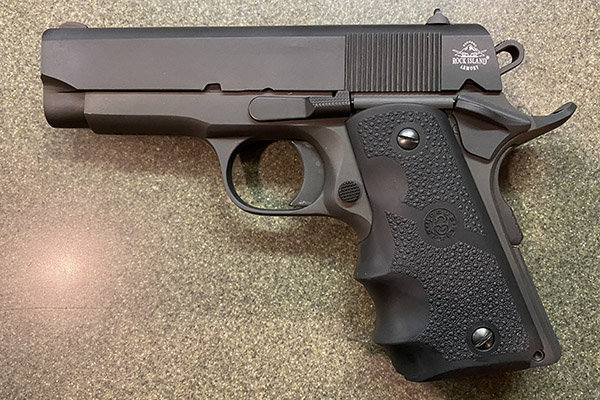
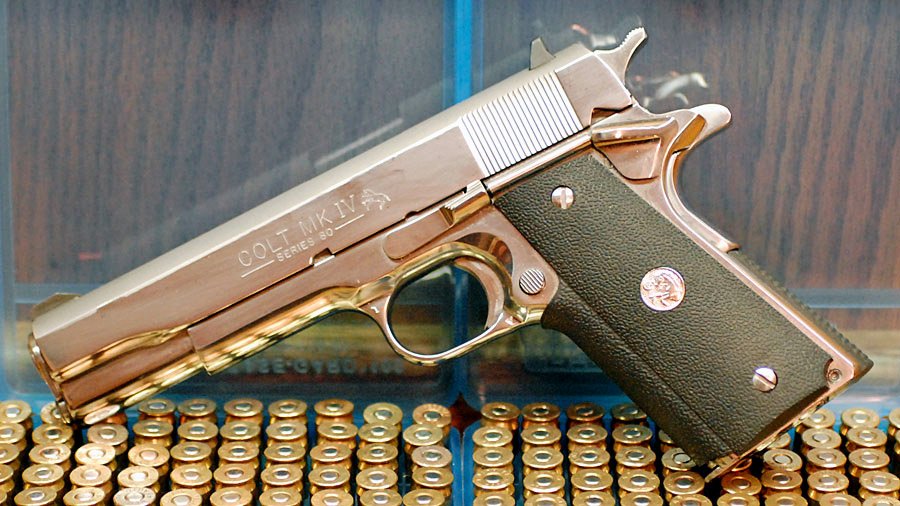
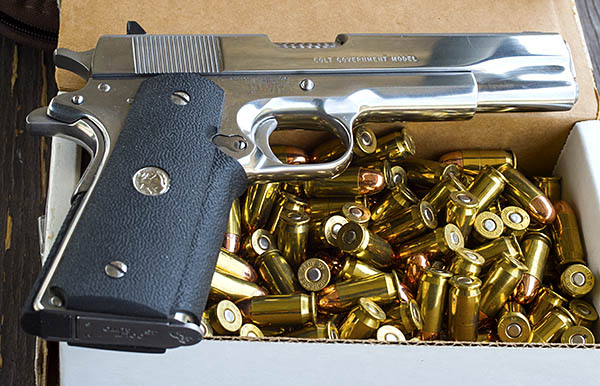
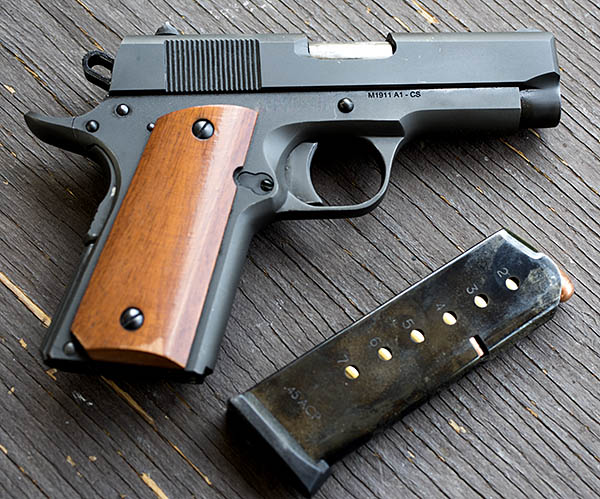
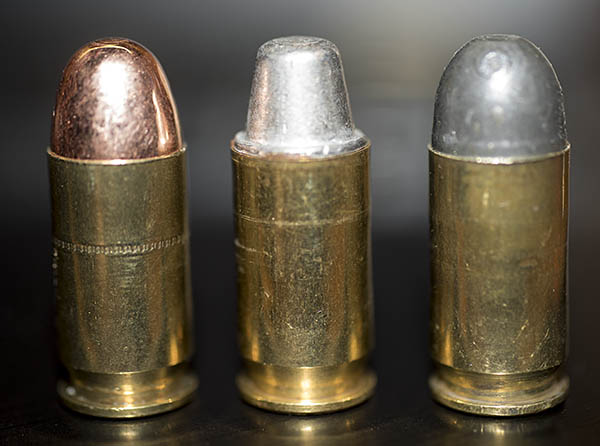
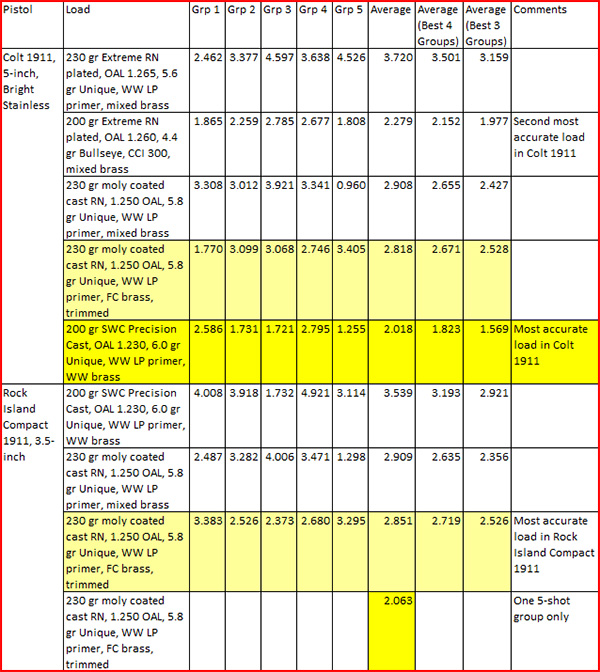 Interesting stuff, to be sure. Most of the variability you see in the above table (and you can see that there’s a lot) was me. A machine rest would have provided for better groups, but you get what you get, and what you get here is me.
Interesting stuff, to be sure. Most of the variability you see in the above table (and you can see that there’s a lot) was me. A machine rest would have provided for better groups, but you get what you get, and what you get here is me.